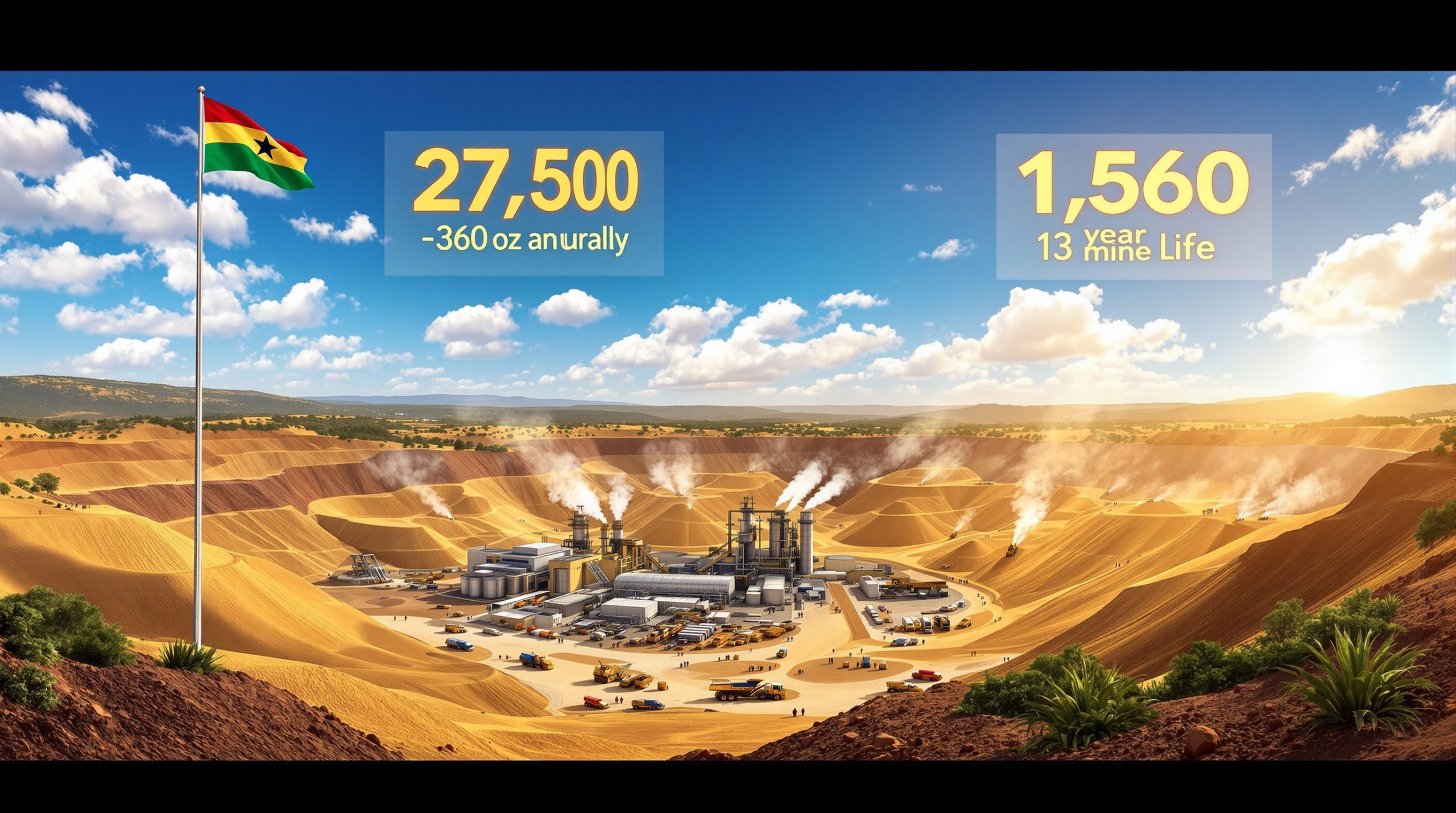South Africa's Mining Industry: Historical Evolution and Modern Significance
South Africa's mining sector stands as a cornerstone of the nation's economic foundation, shaped by centuries of resource extraction and industrial development. From indigenous mining practices to world-class operations, the evolution of this industry tells a compelling story of transformation, challenge, and resilience.
What is the historical significance of mining in South Africa?
Mining in South Africa has roots extending far before European colonization, with indigenous communities extracting minerals for tools, weapons, and decorative items. However, the industry underwent revolutionary change with two monumental discoveries: diamonds near Kimberley in 1867 and gold on the Witwatersrand in 1886.
These discoveries catalyzed extraordinary industrial development and urbanization, leading to the establishment of Johannesburg as Africa's economic powerhouse. The city's very existence stands as testament to mining's transformative power, rising from dusty gold fields to a metropolitan center within a single generation.
The mining industry profoundly shaped South Africa's socioeconomic landscape through the migrant labor system, which drew workers from across Southern Africa. This system fundamentally altered regional demographics and established patterns of inequality that continue to influence modern South African society.
Key Historical Developments in South African Mining
- 1867: Discovery of diamonds near Kimberley sparked the first major mineral rush
- 1886: Gold discovered on the Witwatersrand, triggering unprecedented industrial growth
- Early 1900s: Establishment of major mining houses that dominated the economy for decades
- 1970s-1980s: Peak gold production period, positioning South Africa as the world's leading gold producer
- 1994: Post-apartheid mining reforms aimed at broader economic participation
- 2004: Implementation of the Mining Charter to address historical inequalities
The historical importance of mining extends beyond economics into politics, culture, and social development. Mining capital funded infrastructure development, educational institutions, and healthcare facilities while simultaneously creating deep social divides that South Africa continues to address today.
How does South Africa's mineral wealth compare globally?
South Africa possesses one of the world's most diverse and valuable mineral endowments. The country's geological profile, formed over billions of years, has created extraordinary mineral concentrations that few nations can match.
The nation holds approximately 80% of global platinum group metals (PGMs) reserves, positioning it as the dominant supplier of these critical elements. Additionally, South Africa retains significant portions of the world's gold, chromium, manganese, and vanadium reserves, maintaining its status as a minerals powerhouse despite production challenges.
South Africa's Global Mineral Position (2024)
| Mineral | Global Ranking | % of World Reserves |
|---|---|---|
| Platinum | 1st | ~75% |
| Chromium | 1st | ~72% |
| Manganese | 1st | ~80% |
| Vanadium | 1st | ~32% |
| Gold | 5th | ~11% |
| Diamonds | 6th | ~7% |
This exceptional mineral diversity provides economic resilience through commodity price cycles, with different minerals experiencing demand peaks at different times. While gold production has declined from historical peaks, South Africa's PGM sector has strengthened, and growing demand for battery minerals opens new opportunities.
South Africa's mineral wealth extends beyond the widely recognized resources. The country also holds significant deposits of iron ore, coal, uranium, titanium minerals, and rare earth elements, adding further dimension to its geological riches.
What are the current economic contributions of South Africa's mining sector?
Despite facing multiple challenges, mining in South Africa remains a cornerstone of South Africa's economy. The sector directly contributes approximately 8-9% to GDP, generates over 40% of export earnings, and provides critical employment in regions with limited economic alternatives.
Mining directly employs around 450,000 people, with an additional 1.6 million jobs supported indirectly through the supply chain. This employment multiplier effect highlights the industry's broader economic impact beyond direct production.
Economic Impact of Mining in South Africa (2024)
- Direct GDP contribution: R360 billion (~$20 billion)
- Export earnings: R630 billion (~$35 billion)
- Tax revenue: R42 billion (~$2.3 billion)
- Foreign direct investment: 15% of national total
- Employment: 450,000 direct jobs
Recent success stories illustrate the sector's continued vitality. In August 2025, Gold Fields reported a threefold increase in profits and raised its interim dividend by over 130%, driven by record bullion prices and operational improvements. This performance demonstrates investor confidence and the enduring relevance of gold exports in a volatile global economy.
Mining's economic contributions extend beyond financial metrics into skills development, technology transfer, and community development. Many mining companies implement extensive social and labor plans that fund infrastructure, education, and healthcare in mining-affected communities.
What challenges does South Africa's mining industry face?
The mining sector confronts significant operational and structural challenges that have intensified in recent years, requiring innovative responses and strategic adaptation.
Infrastructure and Operational Challenges
-
Energy insecurity: Persistent load-shedding from Eskom has forced mining operations to curtail production and invest heavily in alternative energy solutions. Many operations now generate 20-30% of their electricity from renewable energy integration.
-
Water scarcity: Many mining regions face water stress, requiring significant investments in water efficiency and recycling technologies. Climate change is expected to exacerbate this challenge in coming decades.
-
Aging infrastructure: Rail, port, and road networks require modernization to support efficient mineral exports. Logistics bottlenecks frequently constrain production volumes.
-
Declining ore grades: Particularly in gold mining, where deeper extraction becomes technically challenging and more expensive. The average gold grade has declined from over 10g/t in the 1970s to below 3g/t in many operations today.
Regulatory and Social Challenges
-
Policy uncertainty: Frequent changes to mining regulations and ownership requirements create investment hesitancy and complicate long-term planning.
-
Community relations: Tensions with mining-affected communities over environmental impacts and benefit-sharing continue to present challenges for sustainable operations.
-
Labor relations: History of industrial action and wage disputes affect operational stability and investor confidence.
-
Safety concerns: Despite improvements, mining safety remains a significant challenge, particularly in deep-level gold mining.
These challenges, while substantial, have prompted innovation and adaptation across the industry. Companies are investing in technological solutions, community engagement strategies, and operational efficiencies to maintain competitiveness in a complex environment.
How is South Africa's mining industry adapting to the green energy transition?
South Africa's mining sector is strategically repositioning itself within the global green energy transition, leveraging its rich endowment of critical minerals essential for renewable technologies.
Critical Minerals for Green Technologies
-
Platinum Group Metals (PGMs): Essential for hydrogen fuel cells, catalytic converters, and green hydrogen production. South Africa's dominant position in PGM production gives it strategic importance in the hydrogen economy.
-
Manganese and Vanadium: Key components in energy storage technologies and high-performance batteries. South Africa holds approximately 80% of the world's high-grade manganese deposits.
-
Chromium: Required for stainless steel used in renewable energy infrastructure, with South Africa possessing approximately 72% of global reserves.
-
Rare Earth Elements: Increasingly important for electric motors and wind turbines, with South Africa having significant underdeveloped deposits.
As Western economies seek to diversify supply chains away from Chinese dominance, South Africa's established mining infrastructure and relatively stable governance make it an attractive alternative source for these critical minerals.
Mining companies are also embracing the energy transition internally, with significant investments in renewable energy at mine sites. These investments are driven by both economic considerations—reducing exposure to Eskom's unreliable supply and rising tariffs—and corporate sustainability commitments.
What technological innovations are transforming South African mining?
The industry is embracing technological innovation to address its unique challenges, particularly in deep-level mining where South Africa has unparalleled expertise developed over more than a century.
Key Technological Developments
-
Automation and robotics: Remote-controlled equipment reducing human exposure to dangerous conditions, particularly in narrow-reef, deep-level gold and platinum mines.
-
AI and predictive analytics: Optimizing operations, maintenance scheduling, and resource management through real-time data analysis and machine learning.
-
Digital twins: Creating virtual replicas of mining operations to simulate and optimize processes before implementation, reducing costs and increasing efficiency.
-
Renewable energy integration: Solar installations and battery storage systems at mine sites reducing reliance on grid electricity and lowering carbon footprints.
-
Water conservation technologies: Closed-loop systems and advanced filtration reducing freshwater consumption in water-stressed regions.
The Mine of the Future initiative, led by the Minerals Council South Africa, aims to accelerate technology adoption across the industry, focusing on safety improvements, productivity enhancements, and environmental sustainability.
South African mining companies are also partnering with technology startups, research institutions, and equipment manufacturers to develop specialized solutions for the unique challenges of mining at extreme depths. These innovations not only improve local operations but create exportable expertise and modern mining technology.
How is South Africa addressing mining's environmental impacts?
Environmental sustainability has become a central focus for South Africa's mining sector, driven by regulatory requirements, investor expectations, and community concerns about mining's ecological footprint.
Environmental Management Strategies
-
Mine rehabilitation: Progressive restoration of disturbed land during and after mining activities, with innovative approaches to soil remediation and revegetation.
-
Acid mine drainage mitigation: Technologies to prevent and treat acidic water from mining operations, a particular concern in the gold mining regions around Johannesburg.
-
Carbon reduction initiatives: Energy efficiency programs and renewable energy adoption aimed at reducing the sector's greenhouse gas emissions.
-
Biodiversity conservation: Offset programs and habitat protection in mining regions, with some mining companies managing nature reserves larger than their operational footprint.
-
Water stewardship: Watershed management and water recycling systems reducing impact on local water resources and communities.
The industry's environmental performance is increasingly linked to access to capital, with international investors applying strict ESG (Environmental, Social, Governance) criteria to mining investments. Companies with strong sustainability credentials typically enjoy lower costs of capital and broader investor interest.
South Africa's environmental regulations for mining have also strengthened significantly, requiring comprehensive environmental impact assessments, management plans, and financial provisions for rehabilitation. While implementation challenges remain, the regulatory framework aligns with international best practices and has driven significant investment in mine reclamation innovation.
What role do small-scale and artisanal miners play in South Africa?
While South Africa's mining sector is dominated by large corporations, small-scale and artisanal mining plays an important socioeconomic role, particularly in rural communities with limited formal employment opportunities.
Small-Scale Mining Landscape
- Estimated 30,000+ artisanal miners operating across South Africa
- Primary focus on gold, diamonds, and construction materials
- Significant challenges with formalization and regulatory compliance
- Growing government initiatives to support legitimate small-scale operations
- Persistent issues with illegal mining activities
The 2023 Artisanal and Small-Scale Mining Policy aims to create pathways for formalization, providing technical support, access to finance, and market linkages for legitimate small-scale operators. This policy represents a shift from previous approaches that focused primarily on enforcement rather than integration.
Small-scale mining offers opportunities for entrepreneurship and local economic development when properly supported and regulated. Success stories from regions where formalization has progressed show the potential for artisanal mining to contribute positively to rural livelihoods while operating within environmental and safety standards.
The sector faces significant challenges, including safety risks, environmental impacts, and conflicts with large-scale mining operations. Addressing these challenges requires collaborative approaches involving government, large mining companies, communities, and the small-scale miners themselves.
How is the mining industry addressing transformation and inclusive growth?
South Africa's mining sector continues to grapple with transformation imperatives, aiming to create a more inclusive industry that addresses historical inequalities while maintaining global competitiveness.
Transformation Initiatives
-
Broad-Based Black Economic Empowerment (B-BBEE): Ownership requirements and procurement policies designed to increase participation of historically disadvantaged South Africans.
-
Skills development: Training programs and educational support for historically disadvantaged communities, focusing on technical and managerial capabilities.
-
Enterprise development: Support for black-owned businesses in the mining supply chain, with preferential procurement policies and supplier development programs.
-
Community development: Social and labor plans investing in mining-affected communities through infrastructure, education, and healthcare initiatives.
-
Gender equality: Initiatives to increase women mining challenges and participation, from entry-level positions to executive leadership and board representation.
The Mining Charter III, despite ongoing legal challenges, provides the regulatory framework for transformation, setting targets for ownership, procurement, and employment equity. While progress has been made, particularly in employment equity and procurement, ownership transformation remains contentious.
Mining companies are increasingly approaching transformation not merely as compliance but as business strategy, recognizing that diverse workforces and inclusive supply chains enhance innovation, community relations, and operational resilience.
What is the future outlook for South Africa's mining industry?
Despite significant challenges, South Africa's mining industry shows remarkable resilience and adaptive capacity. The sector's future will likely be shaped by several key trends and opportunities:
Future Growth Drivers
-
Critical minerals demand: Growing market for PGMs, manganese, and other minerals essential for green technologies, positioning South Africa advantageously in the global energy transition.
-
Technological innovation: Productivity improvements through digitalization and automation extending mine life and improving competitiveness.
-
Exploration revival: New geological mapping and exploration techniques revealing previously unknown deposits and extending known resource bases.
-
Beneficiation opportunities: Value addition through downstream processing, particularly in PGMs, battery minerals, and specialized steel alloys. Further development of mineral beneficiation in South Africa could unlock significant economic value.
-
ESG leadership: Competitive advantage through environmental and social performance attracting investment and premium pricing for responsibly produced minerals.
With appropriate policy support, infrastructure investment, and continued innovation, South Africa's mining sector can maintain its global significance while contributing more effectively to inclusive economic development.
The industry's future success will depend on effective collaboration between government, mining companies, labor, communities, and technology partners to address structural challenges while capitalizing on emerging opportunities in the global minerals market.
FAQ: Mining in South Africa
Is gold mining still important in South Africa?
While gold production has declined significantly from its peak in the 1970s, gold mining remains an important component of South Africa's mining sector. The country still holds substantial gold reserves, and higher gold prices have renewed interest in both existing operations and exploration. Companies are investing in technologies to access deeper deposits and process lower-grade ores more efficiently.
How is load-shedding affecting mining operations?
Electricity supply constraints have forced mining companies to reduce operations during load-shedding periods, impacting production volumes and increasing costs. In response, many major mining companies have invested in self-generation capacity, primarily through solar installations combined with battery storage. Some operations have reported up to 30% of their electricity now coming from renewable sources.
What minerals are most important for South Africa's future?
While traditional minerals like gold and diamonds remain significant, South Africa's future mining growth will likely be driven by minerals essential for the green energy transition. These include platinum group metals (for hydrogen technologies), manganese and vanadium (for battery storage), chromium (for stainless steel), and rare earth elements (for various high-tech applications).
How safe is mining in South Africa today?
Safety in South African mines has improved substantially over the past decades, with fatality rates declining by over 80% since the early 2000s. However, challenges remain, particularly in deep-level gold mining. The industry has embraced a zero-harm philosophy, investing in training, technology, and systems to eliminate fatalities and reduce injuries.
Disclaimer: This article contains forward-looking statements about market trends, technological developments, and economic projections. These statements involve risks and uncertainties that could cause actual results to differ materially from those anticipated. Readers should consider these projections as possibilities rather than guaranteed outcomes.
Wondering If You Can Profit From The Next Major Mining Discovery?
Discover why significant mineral discoveries can lead to exceptional returns by exploring Discovery Alert's dedicated discoveries page, where their proprietary Discovery IQ model transforms complex mining data into actionable investment opportunities for ASX investors.




